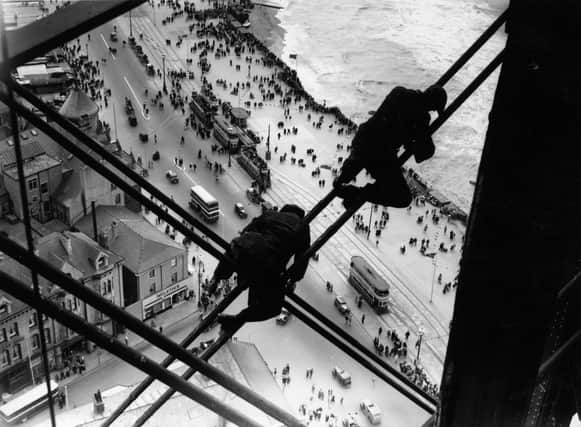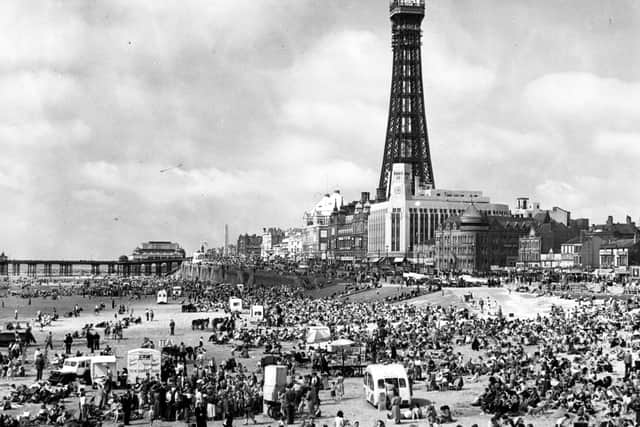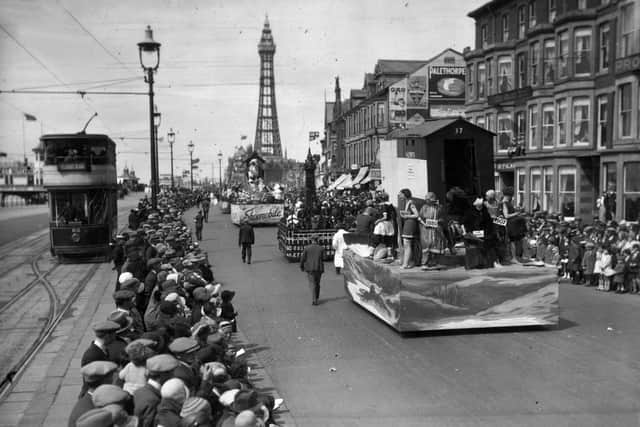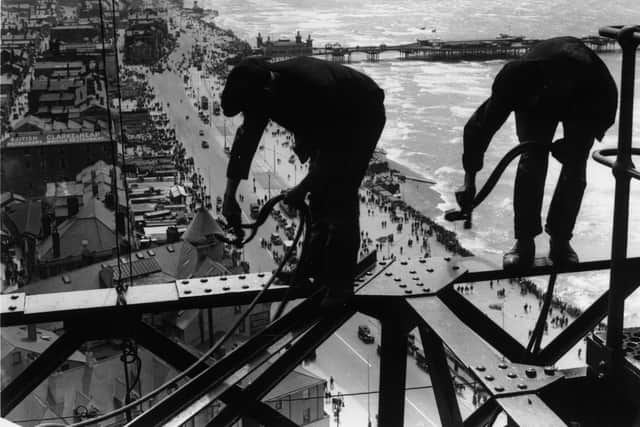Rare pictures of Blackpool in its holiday heyday


But while it is the resort in its heyday that is captured in these rarely-seen photographs, Blackpool’s beginnings were anything but entertaining.
Little more than a hamlet until the effects of the industrial revolution began to unload tourists there by the trainload, its name betrays its rustic roots. “Black pool” was what locals called the effluent from a drainage channel that ran over a peat bog on its way to the sea.
Advertisement
Hide AdAdvertisement
Hide AdThe first tourists had arrived by stagecoach – from Manchester in 1781, and from Halifax the following year. The journey from Yorkshire took two days.


It was the enterprise of Henry Banks in the early years of the century that saw the beginnings of the town that stands today. Known as the “father of Blackpool”, Banks and his heirs built the first holiday cottages, the first assembly rooms – the body of which still stand – and first purpose-built place of entertainment, the Victoria Promenade.
Many more seaside entrepreneurs followed, eager to exploit the captive holiday audiences that the Lancashire mill towns disgorged.
In 1863, the North Pier – the first of three along the prom – was built out of cast iron.
Advertisement
Hide AdAdvertisement
Hide AdIn 1893, the old Beach Hotel was flattened to make room for the Tower, to this day a beacon for holidaymakers and day-trippers from far and wide.


It was not until the 1970s, with the boom in cheap package deals to the Mediterranean, that the tide turned for Blackpool and the stars that had twinkled there, went out. But as long as there is sand on the beach, Blackpool will still be Blackpool.
Editor’s note: first and foremost - and rarely have I written down these words with more sincerity - I hope this finds you well.
Almost certainly you are here because you value the quality and the integrity of the journalism produced by The Yorkshire Post’s journalists - almost all of which live alongside you in Yorkshire, spending the wages they earn with Yorkshire businesses - who last year took this title to the industry watchdog’s Most Trusted Newspaper in Britain accolade.
Advertisement
Hide AdAdvertisement
Hide AdAnd that is why I must make an urgent request of you: as advertising revenue declines, your support becomes evermore crucial to the maintenance of the journalistic standards expected of The Yorkshire Post. If you can, safely, please buy a paper or take up a subscription. We want to continue to make you proud of Yorkshire’s National Newspaper but we are going to need your help.


Postal subscription copies can be ordered by calling 0330 4030066 or by emailing [email protected]. Vouchers, to be exchanged at retail sales outlets - our newsagents need you, too - can be subscribed to by contacting subscriptions on 0330 1235950 or by visiting www.localsubsplus.co.uk where you should select The Yorkshire Post from the list of titles available.
If you want to help right now, download our tablet app from the App / Play Stores. Every contribution you make helps to provide this county with the best regional journalism in the country.
Sincerely. Thank you.
James Mitchinson, Editor
Comment Guidelines
National World encourages reader discussion on our stories. User feedback, insights and back-and-forth exchanges add a rich layer of context to reporting. Please review our Community Guidelines before commenting.